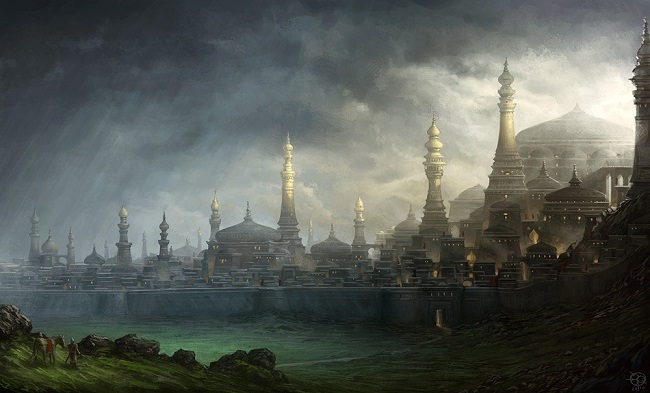
| Category | Cities | ||||||||||||
| Continent | Brucrumus | ||||||||||||
| Region | Miradelgûn | ||||||||||||
| Owner | independent city-state | ||||||||||||
| Population | |||||||||||||
| Races |
| ||||||||||||
| Deities | Bahamut, Geb, Kebechet | ||||||||||||
| Founded | 9 Kindle 190 LE | ||||||||||||
| Map | Halmarth |
Founded by a Lith-Crillion research group named Sâlo Tânê 6, the site chosen for their Khimilêth settlement was the unforgiving northern tracts of the Sands of Hell. Its founders were tasked with finding ways of turning deserts, wastelands and blighted areas into verdant landscapes. During the building of the Pyramid of Life, Khimilêth grew from a large workforce. The most skilled of these workers were the Knudmid, a sand giant people with a long history of building great edifices.
In the Second Epoch, Khimilêth became the home of Khazarkars seeking religious freedom and equality. Exiles of the Khazarkar Empire, they were those against the empire's monotheism, a theocracy dedicated to Set, and the Khazarkar caste system; liberty beyond the machinations of the empire's elite caste, the Minâth-Nôrî.
Khimilêth has three great defenses, a hot and unforgiving desert to the south, Hullbreaker's treacherous obstacles, and the protective powers of the Pyramid of Life. These defenses have long kept the city from succumbing to the Khazarkar Empire and those hungry for very fertile lands around the city's mystical pyramid.
Unlike the Khazarkar Empire, the Khazarkars of Khimilêth are not restricted to caste, are free to intermarry between castes, and with other races. The city is open to any church, with most paying homage to Bahamut, Geb and Kebechet.